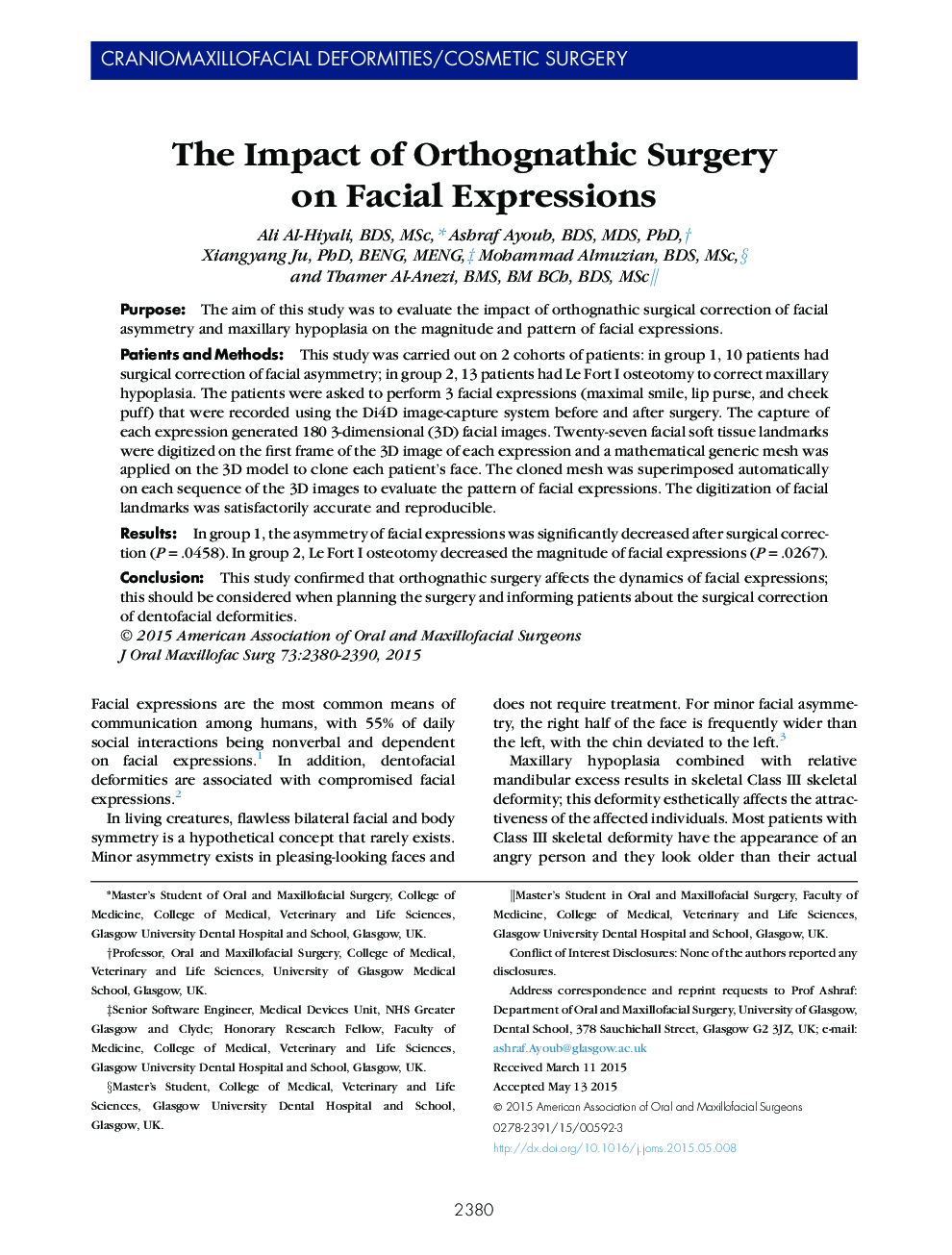| Article ID | Journal | Published Year | Pages | File Type |
|---|---|---|---|---|
| 3153011 | Journal of Oral and Maxillofacial Surgery | 2015 | 11 Pages |
PurposeThe aim of this study was to evaluate the impact of orthognathic surgical correction of facial asymmetry and maxillary hypoplasia on the magnitude and pattern of facial expressions.Patients and MethodsThis study was carried out on 2 cohorts of patients: in group 1, 10 patients had surgical correction of facial asymmetry; in group 2, 13 patients had Le Fort I osteotomy to correct maxillary hypoplasia. The patients were asked to perform 3 facial expressions (maximal smile, lip purse, and cheek puff) that were recorded using the Di4D image-capture system before and after surgery. The capture of each expression generated 180 3-dimensional (3D) facial images. Twenty-seven facial soft tissue landmarks were digitized on the first frame of the 3D image of each expression and a mathematical generic mesh was applied on the 3D model to clone each patient's face. The cloned mesh was superimposed automatically on each sequence of the 3D images to evaluate the pattern of facial expressions. The digitization of facial landmarks was satisfactorily accurate and reproducible.ResultsIn group 1, the asymmetry of facial expressions was significantly decreased after surgical correction (P = .0458). In group 2, Le Fort I osteotomy decreased the magnitude of facial expressions (P = .0267).ConclusionThis study confirmed that orthognathic surgery affects the dynamics of facial expressions; this should be considered when planning the surgery and informing patients about the surgical correction of dentofacial deformities.
